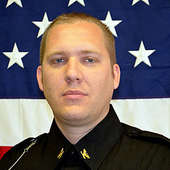Opinion
The new age of radio communications
Saturday, October 1, 2016
Radio communications have been around for a long time now, and each year they continue to improve. In the early days of law enforcement, patrol cars did not have radios in them at all, and when they were first installed, they were only one way radios. It was not until the mid-1930's that two way radios started to be used in patrol cars, and it would be many more years before it became a standard feature. I can only imagine what it was like trying to patrol without any form of communication. There were also no cell phones back then, so the fastest way to communicate was to find the nearest phone and call in. Things have come a long way since then, and yet we find ourselves again at a changing point in the radio world. Just in my time in law enforcement, I have seen the switch form broad band to narrow band radios and now narrow band radios are being replaced with digital radio systems. With improvements that have been made to technology that assist us with investigations, evidence, vehicles, and equipment, we seldom realize how much the radio has advanced the world of law enforcement. Radios in police vehicles today are the standard and most used form of communications for police when being dispatched to emergency calls. It is what we often refer to as our "lifeline." Even with all the technology we have today in cell phones, many areas of our county do not have cell phone signal and we rely completely on the radio. Losing radio signal with a deputy out on a call is extremely alarming, but sadly it is something we still experience today. Over the past year we have been testing the use of digital radios in different parts of the county to see how effective it would be to make the transition. A few years ago, digital radios were so expensive it was not feasible to purchase any without the assistance of a grant. Since that time, digital radios have decreased dramatically in cost and now radios that are capable of operating as both narrow-band and digital can be purchased for the same price as just a narrow band radio. The difference in quality and how easily dispatch can hear the deputies however is substantial.
I remember the first time I heard an officer yell "shots fired" after becoming a police officer, and the most disturbing thing was not the words "shots fired," but the broken scrambled words the officer yelled after. The radio signal was weak and although I could make out he was yelling shots fired, no one could hear where he was at, or what he was saying after. It is a terrible feeling when you know someone is in need of help and you are ready to go assist, but have no idea where to go. In most areas out in the county, deputies must use their car radios to reach dispatch because the portable radio on their belt does not have enough signal to get through. With testing we have done so far, the digital radios on their belts can be heard by dispatch in places our current radios have never worked. As we continue to test these radios and prepare a plan to improve the quality of communications, the level of safety we provide to our deputies, and to our citizens will also improve.

